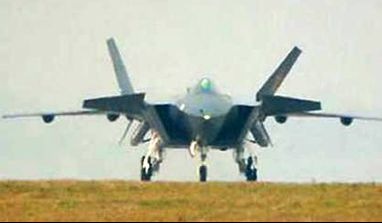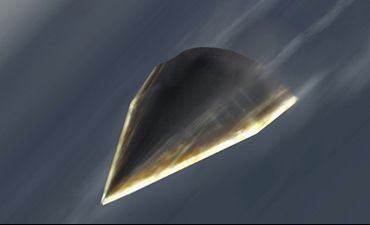The two versions would be ready for launch in less than thirty minutes.
The "Dong Feng" or "Vento dell'Est" class is made up of a series of medium and long range intercontinental ballistic carriers in service with the Chinese Missile Strategic Force.
The DF-31 is a three-stage ballistic missile on a mobile or sub-driven ramp with a maximum estimated range of eight thousand km. The astro-inertial guided missile is able to carry only one head from a megatone or three MIRVs from 150 kilotons.
The Chinese Missile Strategic Force has ten DF-31 in service.
The DF-31A differs for the greater range, around twelve thousand kilometers and for the ability to transport three MARV warheads from 150 chilotons. The nuclear attack capability represented by the DF-31As is twenty missiles ready for combat.
To this long-range nuclear projection, we need to add the brand new DF-41 not yet shown to the public. Beijing could have built a dozen on a mobile ramp (and another twelve in reserve).
According to Western analysts, the DF-41 would be able to carry up to ten maneuverable multi-reentry maneuver heads independent of 250 kilotons at fourteen thousand kilometers away. If the rumors were confirmed, the DF-41 could storm the US with 120 / 240 nuclear warheads.
Compared to last year, China has increased its budget for the Defense of 5,7%. Beijing has the fiscal strength and the political will to support the growth of defense spending. The People's Liberation Army is investing heavily in its land force and aims to strengthen the ability to quickly project troops over long distances. Copious investments also to equip special departments with increasingly advanced technology.
 The Chinese Air Force is advancing an unprecedented large-scale fleet modernization and is rapidly bridging the gap with Western air forces. The first fifth generation Chinese fighter, the J-20 multi-role, could enter service already in the 2018.
The Chinese Air Force is advancing an unprecedented large-scale fleet modernization and is rapidly bridging the gap with Western air forces. The first fifth generation Chinese fighter, the J-20 multi-role, could enter service already in the 2018.
The Chinese Navy has given itself fifteen years as the time limit to build the first aircraft carrier. The first Chinese carrier will be operational within the next decade.
Chinese hackers continue to target US computer systems with targeted intrusions to acquire information.
The American bases of Okinawa and Guam, the first target in a hypothetical nuclear conflict, finally, are within the reach of the Chinese ballistic missiles (those still in service) DF-4 and DF-5. In a massive attack, the warheads would almost certainly hit every type of designated structure and target.
China, in a hypothetical short-term conflict against the United States, would still have to face a series of shortcomings ranging from missile targeting capacity, to difficulties in countering US submarines and Western fighters.
Beijing, meanwhile, continues to successfully develop the "Hypersonic Glide Vehicle" (HGV) nicknamed by the Pentagon "WU-14". Three launches have been carried out to date, after those carried out on January 9th and August 7th last. The new aircraft is able to travel up to eight times the speed of sound. This means that it could easily avoid the current US anti-missile defense system. The WU-14 is able to carry nuclear warheads at a speed higher than Mach 10 (12,359 kilometers per hour).

The HGV is practically immune to the current anti-ballistic countermeasures for conventional re-entry warheads. The ballistic descent trajectory through the atmosphere of the multiple independent heads is easily predictable even if the problem related to their high re-entry speed remains. Problem, however, partly solved at the end of the 80 years, with the production of interceptor missiles designed to destroy the multiple independent warheads in the re-entry phase. A hypersonic aircraft such as the HGV could re-enter the atmosphere by gliding at very high speed and approaching the target in a relatively flat trajectory, thus decreasing identification time from enemy systems. The WU-14 can be transported to various launch heights Chinese ballistic missiles, such as the DF-21 (medium range) and the DF-31 and DF-41 (intercontinental), extending the range of carriers by 12 thousand.
Once put into service, the WU-14 could allow China to conduct kinetic attacks anywhere in the world in minutes. China plans to implement its new high-speed planing aircraft by the 2020. The Chinese hypersonic program predicts the first scramjet aircraft within the 2025. The new frontier of military technology is hypersonic speed.
Hitting a hypersonic aircraft is not currently possible due to the time it takes for defense systems to process a response. The initial detection, the tracking and the solution of fire, however, requires time (we are always talking about seconds) which, however, could be too many considering the hypersonic regime. If a combined attack was launched between traditional ballistic and hypersonic missiles, even the best existing missile defense would not stand a chance. Beyond the third test carried out, it will still take several years to make the WU-14 operational, but it is now beyond doubt that the Chinese are investing resources and materials in hypersonic technology.
The WU-14 is part of China's next-generation strategic nuclear program, but the fact remains that the same technology could be used for conventional attacks against aircraft carriers in the western Pacific.
Franco Iacch












